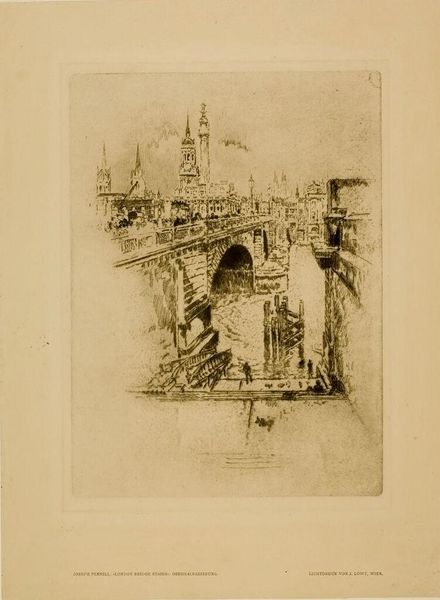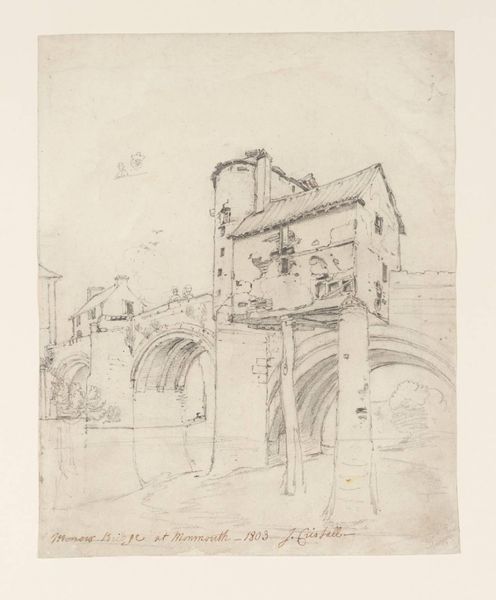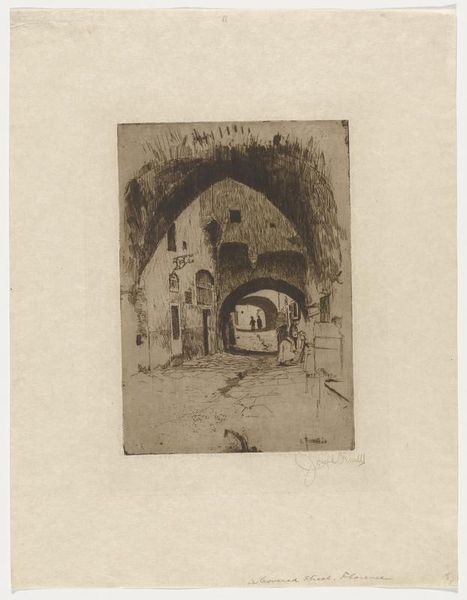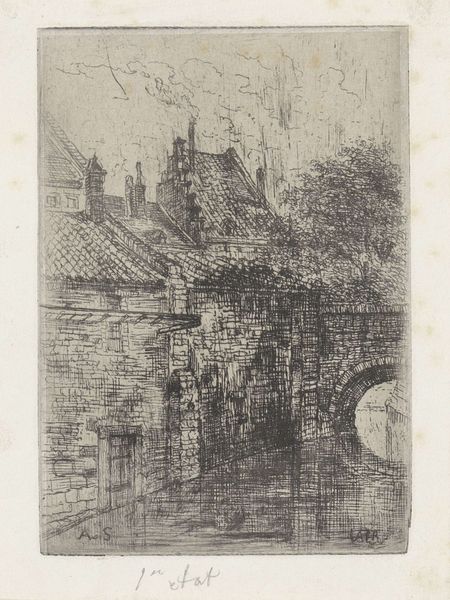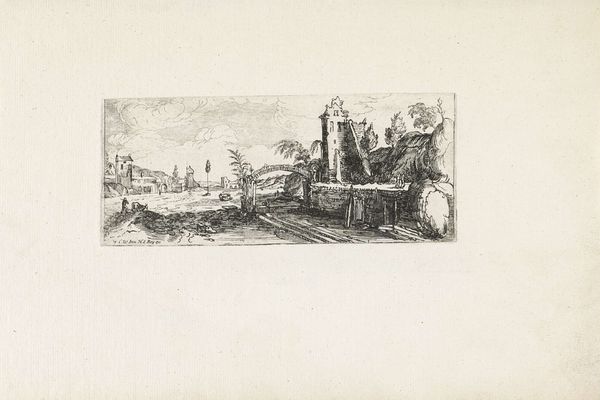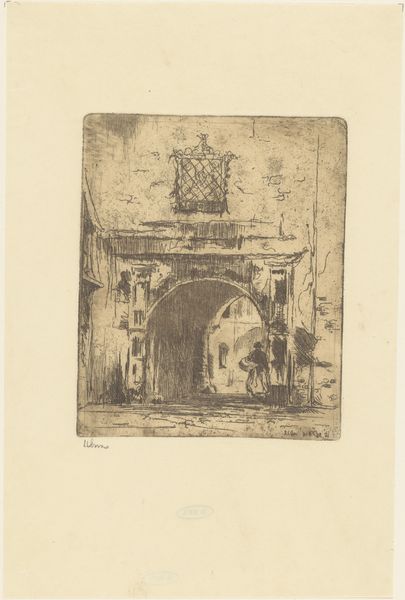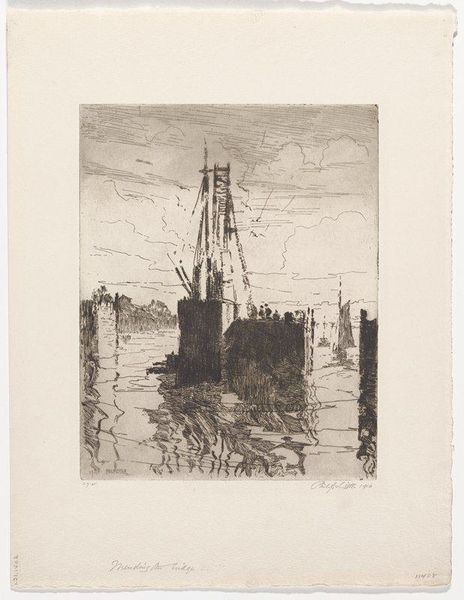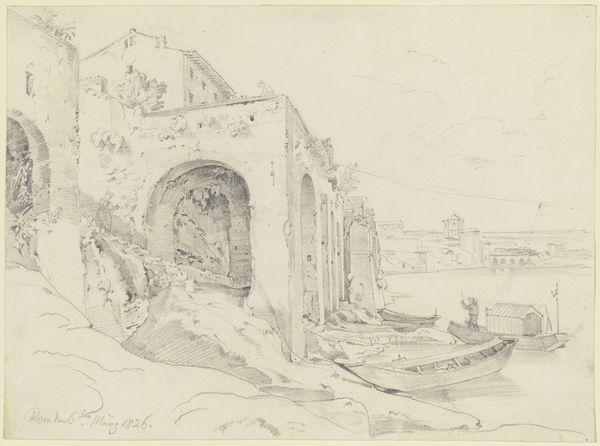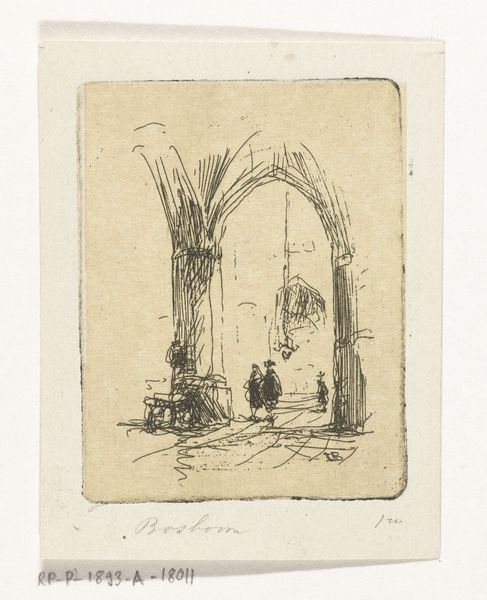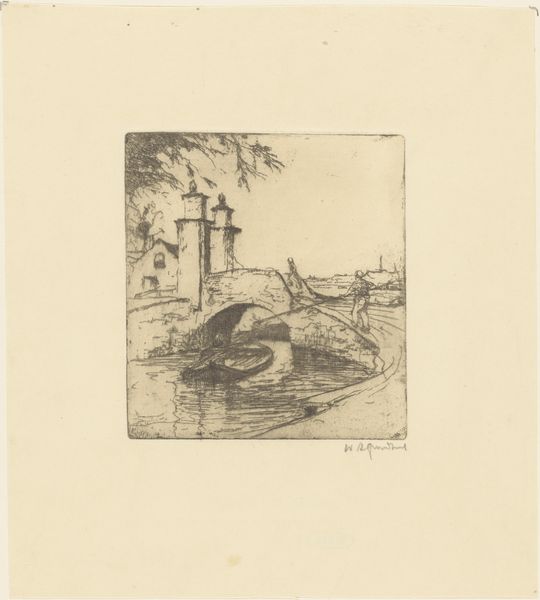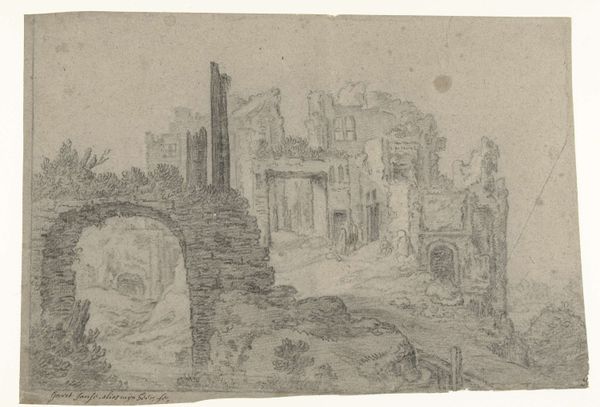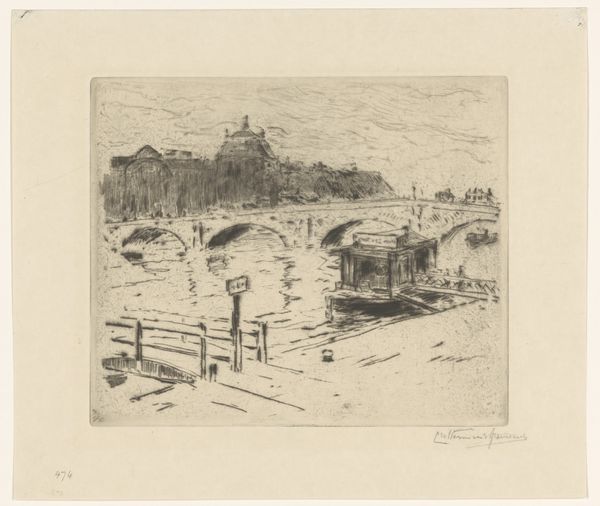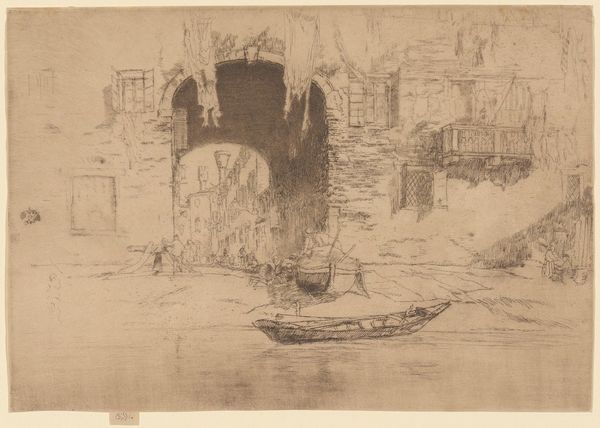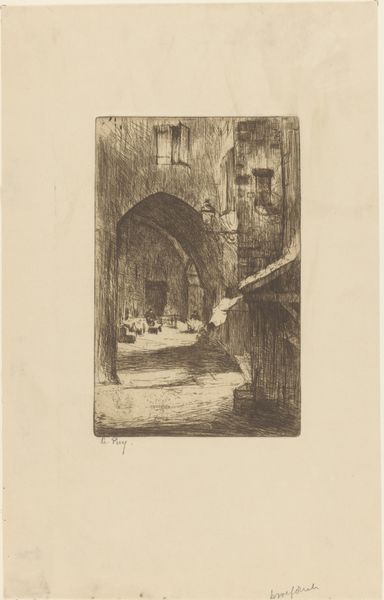
print, etching
# print
#
etching
#
landscape
#
united-states
#
cityscape
#
realism
Dimensions: 9 3/4 x 9 13/16 in. (24.77 x 24.92 cm) (plate)14 5/16 x 12 3/4 in. (36.35 x 32.39 cm) (sheet)
Copyright: No Copyright - United States
Curator: This print is "(At) Chestnut Street Bridge (Marble Yard)" by Joseph Pennell, dating back to 1881. Pennell, known for his cityscapes, captured this scene using etching. What catches your eye first about this image? Editor: Immediately, it’s the energy, that bustling quality – even in what feels like a hazy rendering, I get this sense of movement, almost like a frenetic sketch trying to pin down a rapidly changing city. Curator: Exactly. Look closely at the composition. The bridge dominates the right, its arches strong and defined, while the left side almost dissolves into chaotic activity. It’s a very deliberate contrast, I believe, emphasizing the new construction of this bridge as a transition point. Editor: True. Those arches, the way they frame nothing but darkness beneath – it's incredibly stark, highlighting solidity while obscuring what’s beyond. The crane juxtaposed against it, with its almost skeletal arm pointing towards the skyline – feels laden with symbolism of change. Curator: Symbolism, certainly, but consider the texture as well. The roughness achieved through etching gives the print a unique atmospheric quality. It’s not just a picture; it's a tactile experience; you can almost feel the grime of the marble yard. Editor: You’re right! The limited tonal range works really effectively. There's no strong color at play; it feels as though everything exists in shades of gray, reflecting perhaps a society itself caught between epochs? Is it overly romantic to suggest that the artist yearns for that fading sense of solidity amid chaos? Curator: Not overly so. Pennell frequently explored the relationship between progress and nostalgia. By capturing these evolving urban landscapes, he immortalized fleeting moments. One is left pondering questions about modernity in every stroke. Editor: And he doesn’t idealize progress; there's a sense of something lost amidst the gain. It’s melancholic, but somehow honest about the transformations that shaped not just cities but human consciousness itself. This piece resonates in unexpected ways. Curator: Pennell definitely wanted to offer us more than mere urbanity; the viewer becomes active. It feels like we have walked onto this street ourselves. Editor: Absolutely! A perfect testament to art's enduring power. We bring our own evolving perspective when engaging with these records. Thank you.
Comments
No comments
Be the first to comment and join the conversation on the ultimate creative platform.
